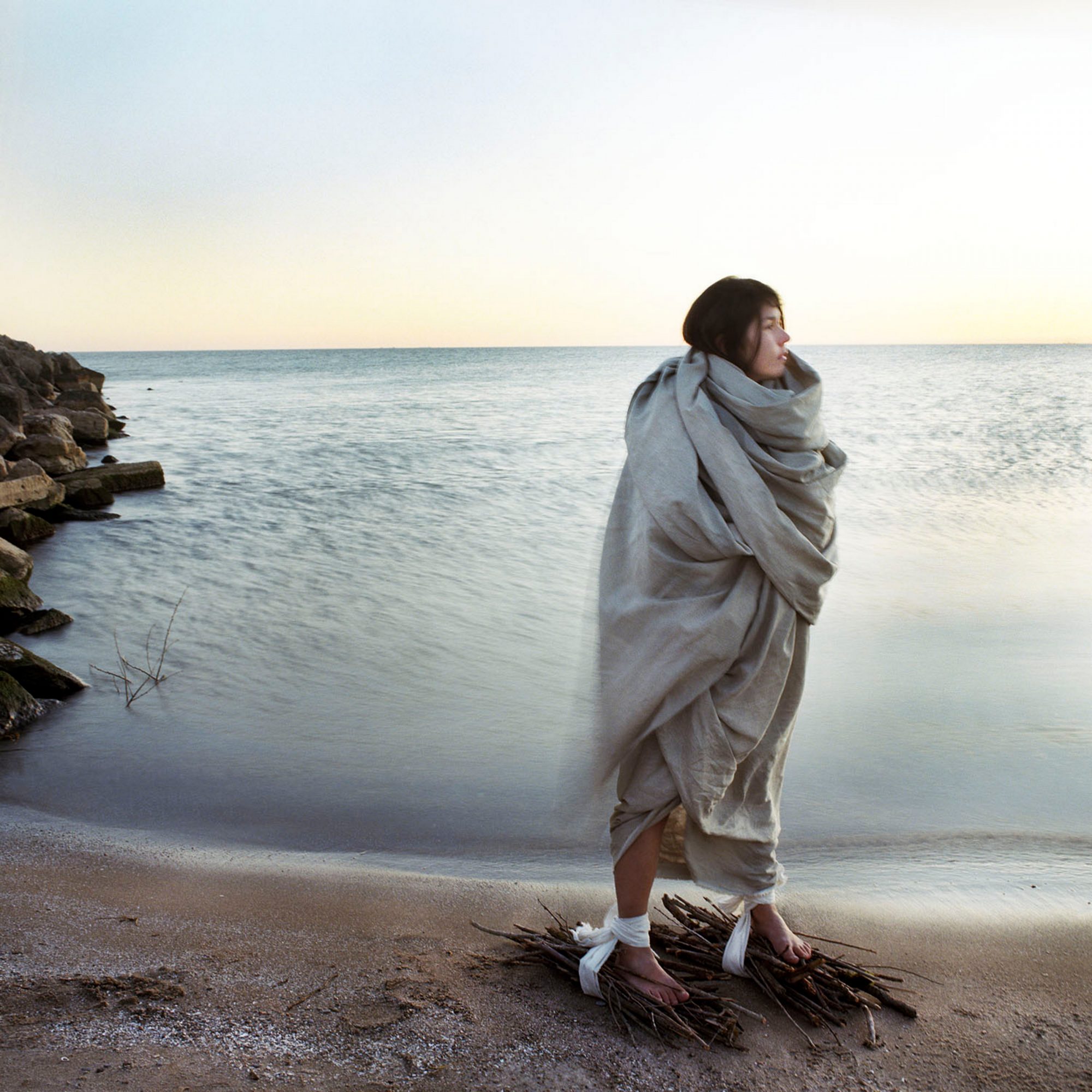Meryl McMaster has garnered praise across Canada for her explorations of identity, representation, storytelling, and the environment through photographic self-portraiture.
An individual of Plains Cree and Euro-Canadian heritage, McMaster explores the dimensions of her own sense of identity, and the complex history of the photographic representation of Indigenous peoples. The three bodies of work in Confluence comprise arresting self-portraits that counter the stereotypical ways that Indigenous peoples have been, and sometimes still are, represented within a colonial framework, principally as objects rather than as subjects of the gaze.
In her Ancestral series (2008-09), McMaster explores the legacy of Indigenous representation by projecting onto her own face, and that of her father’s, historic portraits of Indigenous individuals by such photographers as Edward Curtis and Will Soule, as well as by painter George Catlin. Challenging the enduring power of photography to define and fix identity, McMaster endeavours to “reclaim these images from the stereotypes and misrepresentations … and move them into a contemporary space.”
The interconnectedness between humans and the natural world is emphasized in McMaster’s In-Between Worlds (2010-13) and Wanderings (2015) series, which are set in winter landscapes, to otherworldly effect. McMaster transforms herself into a human-animal hybrid and other enigmatic figures – the cast of characters in Wanderings alludes to those one might meet on an epic quest, in the endeavor to find one’s way. In In-Between Worlds, McMaster explores an ambiguous space created by being simultaneously of and between cultural identities and histories, as well as the synergy created by her bicultural heritage.
In her photography, McMaster contemplates the limitations and possibilities of the self, examining ways in which personal identity is at once tethered to the past, to personal circumstances, and all that shapes who we are, yet can also be radically open to a world of boundless possibilities. Through her own transformations for the camera, she invites us to reimagine and project our own identities, with their histories and ties, into other spaces and stories.
Excerpted from Heather Anderson’s curatorial statement








